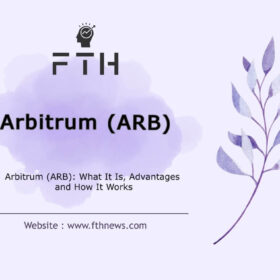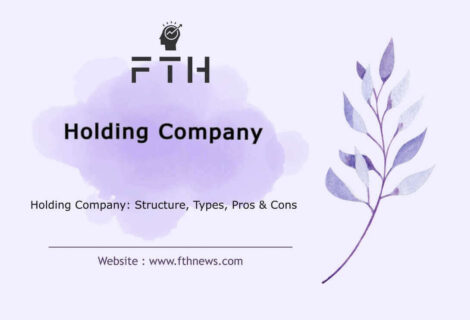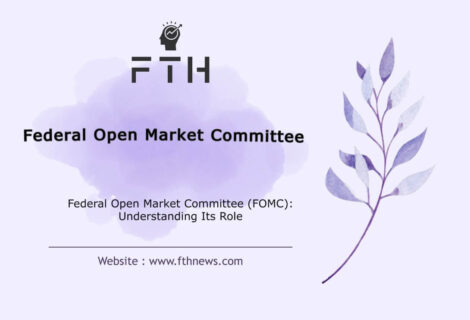
Render Crypto (RNDR): What It Is, Advantages and How It Works
Render Crypto (RNDR) The virtual world encompasses a myriad of elements, including animations, video games, and virtual reality. An essential aspect of creating these virtual experiences involves rendering, a time-consuming and costly process that demands powerful graphics devices.
The Render Token network endeavors to simplify this process for animation producers by connecting them with individuals possessing the requisite graphic devices, thereby making the rendering procedure more accessible and cost-effective. In this article, we delve into the Render Token network, exploring its purpose, functionality, services, the RNDR token, its roadmap, collaborative ventures, and the construction team. We’ll also discuss where to buy RNDR tokens and suitable wallets for holding them. Stay with us for a comprehensive understanding.
What is the Render Crypto (RNDR) Token Network?
The animation realm captivates enthusiasts of all ages. While enjoying the animations that hold sentimental value for us, we often overlook the intricate process of their creation. Ever wondered how these virtual images transform into enchanting animations?
Creators employ various applications and software like Lumion to craft these magical visuals. After designing scenes and characters, creators undertake the rendering process, transforming their designs into cohesive images akin to those seen in animations. Rendering demands a robust graphics card (GPU) and is both time-intensive and costly.
The Render Network constitutes a decentralized collection of GPUs, constructed on the Ethereum smart contract, and operates as a subsidiary of the parent company, OTOY. Autoway Company, established in 2016 (1395), has been active in the computer services sector. To alleviate the financial burden on video and animation creators, Render Token facilitates their connection with individuals possessing available GPUs. Video and animation creators can utilize the graphics cards of contributors on the platform, harnessing the collective power of thousands of devices for rendering. Contributors, in turn, receive rewards from the network for renting out their GPU space.
Purpose and Idea of the Render Crypto (RNDR) Token Network:
Presently, a significant portion of GPU power is consumed by the mining process utilizing the Proof of Work mechanism. This has led to a scarcity of graphics cards for gamers and content creators. GPUs are primarily designed for rendering and graphics processing, with the mining process diverting their intended use. To restore GPUs to their primary function, Render Network seeks to create a platform where GPU owners can monetize their devices. Creative animators and video producers can benefit from this platform, streamlining their production processes. Render Crypto (RNDR) Token aims to serve as the connecting link between those seeking GPU rendering services and individuals owning these devices.
How does the Render Crypto (RNDR) Network work?
The Render Token network employs various components and mechanisms to link requesters (artists, companies, developers, video makers) with GPU renters (miners). Key elements include:
- Proof of Rendering (PoR): Render Token uses this mechanism to connect video and animation studios with GPU renters via the Ethereum blockchain smart contract.
- Peer-to-Peer (P2P) Connectivity: Utilizing the Ethereum blockchain, the network establishes P2P connections, allowing users to interact without intermediaries.
- Service Utilization: Artists and production companies can register their file rendering requests on otoy.com, paying for the service with RNDR tokens. The cost is determined based on file specifications, volume, and duration.
- Rendering Process: Once a rendering request is registered, it is sent to GPU owners who initiate the rendering process upon acceptance. Rendered files are distributed among different miners, allowing simultaneous rendering by multiple GPUs. Miners earn rewards based on activity duration and points.
- Punishment Mechanism: To deter malicious actions, a penalty system is in place. For instance, if a miner shuts down their device during rendering, their reward is transferred to someone else, and their score is reduced. Miners receive compensation for each rendering task, contingent on their activity duration.
Render Token Network Services:
The Render Crypto (RNDR) comprises two main components: creators, who are the requesters of rendering services, and miners, who rent out their systems for rendering. Let’s delve into each:
Creators: In this segment, individuals involved in various creative industries such as video production, gaming, entertainment, virtual and mixed realities, and medicine, can register rendering requests for their files within the network. Upon payment, they receive the rendered files.
An intriguing aspect of the Render Token network is the inclusion of artists and creators of unique tokens (NFTs). Artists can leverage the GPU systems available in this network to produce and sell their artwork at a significantly lower cost. The rendering operations in this network are up to 10 times more cost-effective than those in centralized networks.
Render Crypto (RNDR) Allocation:
The distribution of Render Tokens is allocated as follows:
- 25% for Network Development: This portion is earmarked for the ongoing development and enhancement of the Render Token network.
- 40% for Rewarding Miners and Growing the Rendering Token Team: A substantial portion is dedicated to rewarding miners who contribute their GPU resources to the network. Additionally, it supports the growth and development of the rendering token team.
- 5% Reserved for Special Situations: This segment is frozen for special circumstances that may arise during the network’s operation.
- 10% Distributed After the Construction of the Third Generation of the Network: A portion is reserved to be distributed after the completion of the third generation of the Render Token network.
- 20% Allocated for Marketing and Program Development: This share is utilized for marketing initiatives and further development of the program.
RNDR Token Overview:
The total supply of RNDR tokens is 523,719,841.29 units, with approximately 154,278,922.02 RNDR units currently in circulation. As of the latest update on December 20, 1400 (corresponding to December 2021), the RNDR token is priced at $3.73. It holds the 156th position among digital currencies in terms of market value, with a total market capitalization exceeding $574 million and a 24-hour trading volume of approximately $28 million.
The RNDR token has witnessed fluctuations in its value, hitting its lowest at $0.036 on June 27, 1399, and reaching its highest point at $8.78 on November 30, 1400. These figures provide insights into the token’s historical performance and market dynamics.
What is Render Crypto (RNDR) Token?
The Render Token, conceived by its development team in 2017, has undergone continuous improvement efforts to enhance its network and functionality. The team remains dedicated to achieving its objectives. Let’s explore the Render Token roadmap to understand the key milestones:
Render Crypto (RNDR) Token Roadmap:
- 2017: Initial Token Offering (ICO)
- 2018: Transferring the smart contract to the Ethereum network and setting the total number of tokens in circulation
- 2019: Transferring the network from the test network to the main network
- 2020: Complete launch of the platform and the possibility of user utilization
- 2021: Utilizing layer 2 solutions to reduce transaction fees and transferring to the Polygon network
These steps showcase the evolution and progression of the Render Token network over the years, aligning with the team’s vision and goals.
Render Crypto (RNDR) Network Collaborations:
The Render Token Network has strategically partnered with significant platforms and networks in the blockchain ecosystem, fostering collaborative efforts for mutual benefit. Some notable collaborations include:
1. Cooperation with SiaCoin:
SiaCoin operates as a decentralized network for sharing computer system memory among individuals. The collaboration with Render Token involves enhancing network capacity, contributing to the completion of the RNDR SDK (Render Token Software Development Kit), providing service support, and validating certain Render Token programs.
2. Cooperation with Basic Attention Token (BAT):
The Brave browser, designed to eliminate ads for users and distribute ad revenue to sites and users, introduced its own token called BAT. Brendan Eich, a founder of Render Token, is also the CEO and founder of the Brave browser. The collaboration between BAT and Render Token centers around programming initiatives.
3. Cooperation with Decentraland:
Decentraland, a virtual reality platform utilizing the Ethereum blockchain, allows users to earn money by creating diverse content and programs. Decentraland has utilized Render Token services for activities such as creating 3D content on its platform and has collaborated with Render Token to produce content.
4. Cooperation with Algorand:
Algorand, a third-generation blockchain employing a proof-of-stake (PoS) protocol with pseudo-random functions, addresses scalability issues while maintaining decentralization. Render Token and Algorand have collaborated to establish a cloud computing network of GPUs in a more efficient, powerful, and scalable manner.
These collaborations underline Render Token’s commitment to integrating with diverse projects, expanding its utility, and contributing to the broader blockchain ecosystem.
the Render Token Team:
The RNDR team, backed by OTOY in Los Angeles, USA, comprises talented individuals scattered across the globe. The team is composed of distinguished and innovative figures within the crypto space. Let’s meet them:
- Jules Urbach: Founder and CEO of OTOY, Jules Urbach boasts over 25 years of experience in the graphics industry. A visionary since creating his first computer game at 18, his life’s mission has been to revolutionize 3D content production.
- Ari Emanuel: Serving as a consultant in the Render Token Network, Ari is the founder of WME-IMG, a major business entity in the entertainment and media sector.
- J.J. Abrams: A consultant at Render Token, J.J. Abrams is the CEO of the renowned Bad Robot Production company, specializing in television and film productions.
- Brendan Eich: Also acting as a consultant in the Render Token network, Brendan is the CEO and founder of the Brio browser and is widely recognized in the crypto field.
Where to Buy RNDR Token:
RNDR tokens are available for purchase on various centralized exchanges, including Binance, Kocoin, Coinx, Hubi, Crypto.com, MEXC, Balancer, HitBTC, and MandalaExchange. Additionally, users can acquire the token on decentralized exchanges such as UniSwap (version 2 and 3), Quick Swap, and DODO.
Suitable Wallets for Holding RNDR:
RNDR tokens can be securely stored in both hardware and software wallets. Hardware wallet options include Ledger and Trezor, while software wallets such as Exodus, Metamask, TrustVault, Coinomi, Free Wallet, and ImToken are also compatible.
Benefits of RNDR Currency:
Participating in the Render Token network offers numerous advantages, bridging the gap between GPU supply and demand while providing benefits for both ordinary users and customers. Here are some key benefits of the RNDR currency:
Profit for Ordinary Users:
The Render Token protocol enables anyone with a modern GPU to share their rendering power in exchange for tokens. This straightforward process allows ordinary users to earn profits in a safe and simple manner.
Cost Savings for Customers:
Customers utilizing the Render Token network can save on hardware investment costs. By tapping into the rendering power of the community, they avoid the need for extensive hardware resources, reducing overall expenses.
Scalability:
Render Token prioritizes the development of a scalable network. The GPU provisioning business model demands linear scalability to meet increasing demands. Blockchain technology is leveraged to create an efficient, powerful, and capable alternative in the market. Users can process complex files that might be challenging to complete locally.
Expanded Options for Users:
Render Token users enjoy increased options in creating stronger environments. The extensibility of the network empowers developers to design more interactive and immersive landscapes.
Digital Rights Management (DRM):
The Render Token development team recognizes the importance of digital rights management. Existing content repositories are often centralized, leaving creators vulnerable to censorship or data deletion. Render Token utilizes the immutability of blockchain technology to protect creator rights, ensuring better control over the use of their works.
Decentralized Control:
By leveraging blockchain technology, Render Token provides a decentralized platform that prevents censorship or data deletion by centralized entities. This decentralized control empowers creators and protects their content.
Automated Royalty Payments:
Render Token’s digital rights management systems can be set up to automate royalty payments. This feature ensures that content creators receive fair compensation for the use of their works, providing the potential for a higher return on investment (ROI) for developers.
In summary, Render Token not only addresses the practical challenges of rendering processes but also introduces a decentralized, scalable, and rights-protective ecosystem that benefits both contributors and consumers within the digital content creation industry.
Conclusion:
The rendering process is a resource-intensive and time-consuming task, demanding robust systems with powerful processors. Render Token, with the goal of simplifying this process for companies and developers in need of significant processing power, provides a platform that connects users globally to streamline rendering. The objective of Render Token is to enable individuals to contribute their GPUs to this decentralized network and earn money. Artists and companies can leverage the processing power of numerous devices worldwide at a cost-effective rate. This article comprehensively explored the Render Token network, its purpose, functionality, team, services, RNDR token, roadmap, collaborations, where to buy RNDR, and suitable wallets for storage.
FAQ
No, RNDR is built on the Ethereum blockchain, utilizing its smart contract capabilities.
Rendering in crypto refers to the process of generating visual content, often involving complex computations, to create images or animations.
RNDR is decentralized, owned by its users. It operates on the Render Token network.
RNDR’s competitors include Golem and iExec, focusing on distributed computing and rendering.
RNDR facilitates decentralized rendering, connecting users needing processing power with GPU providers.














